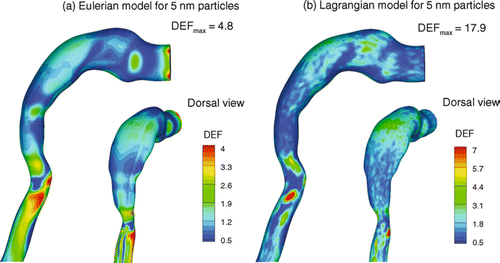Figures & data
FIG. 1 Geometries considered including (a) a fully developed tubular flow field, (b) a 90° tubular bend, and (c) an idealized model of the adult oral airway. The oral airway geometry has been based on CT-imaged data and has been idealized with the use of elliptical cross-sectional segments.

TABLE 1 Dimensions and Reynolds numbers of the flow systems considered
FIG. 2 Evaluation of grid convergence for overall deposition efficiency in the oral airway model at 30 L/min with (a) 5 nm and (b) 100 nm particles.
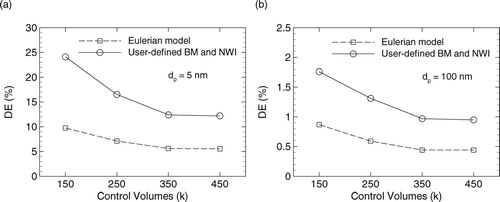
FIG. 3 Effect of particle count on overall deposition efficiency in the oral airway geometry at 30 L/min for 5 nm aerosols. (a) Fluctuations in deposition efficiency over ten runs and (b) standard deviation of fluctuations in deposition efficiency with mean values. Mean values of deposition efficiency for 50,000 and 60,000 particles differ by less than 1%.

FIG. 4 Comparisons of predicted radial root-mean-square displacements (rrms) over time to theoretical standard deviation values (σ). (a) Effect of particle transport models on predicted r rms for 5 and 40 nm particles. The Fluent BM model under predicts the expected standard deviation value by up to one order of magnitude. (b) Effect of the number of particle integration steps per control volume on predicted rrms values.
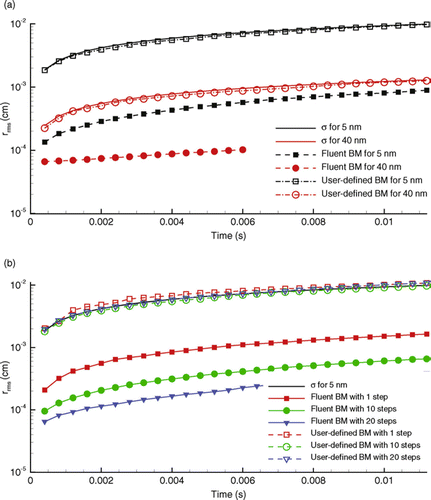
FIG. 5 Deposition efficiency values in the tubular fully developed flow field for the (a) chemical species Eulerian, (b) Fluent BM, (c) user-defined BM, and (d) user-defined BM and NWI models in comparison to the analytic results of CitationIngham (1975).
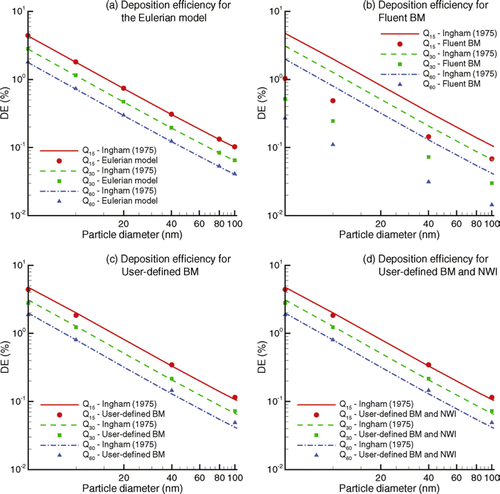
FIG. 6 Local DEF values in the tubular flow geometry for the (a) chemical species Eulerian and (b) Lagrangian user-defined BM models. Predictions of DEF values appear similar between the two models considered.

FIG. 7 Comparison of model deposition efficiency results with the empirical deposition data of CitationWang et al. (2002) for the 90° bend geometry. Of the models considered, the user-defined Lagrangian simulations provide the best agreement with the experimental data.

FIG. 8 Local DEF values in the 90° bend geometry for the (a) chemical species Eulerian and (b) Lagrangian user-defined BM models. Predictions of DEF values appear similar between the two models considered.
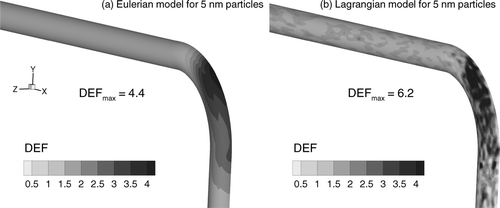
FIG. 9 Model predictions of deposition efficiency in the oral airway geometry for particles ranging from 1 to 120 nm and tracheal flow rates of (a) 15, (b) 30, and (c) 60 L/min. For an inhalation flow rate of 15 L/min, results of the Lagrangian model with user-defined BM and NWI routines provide the best match to the available in vitro deposition data of Cheng et al. (Citation1993, Citation1997a).

FIG. 10 Local DEF values in the oral airway geometry for the (a) chemical species Eulerian and (b) Lagrangian user-defined BM and NWI models. Contour patterns of DEF values appear similar between the models; however, significant differences in the magnitudes of DEF values are observed.
